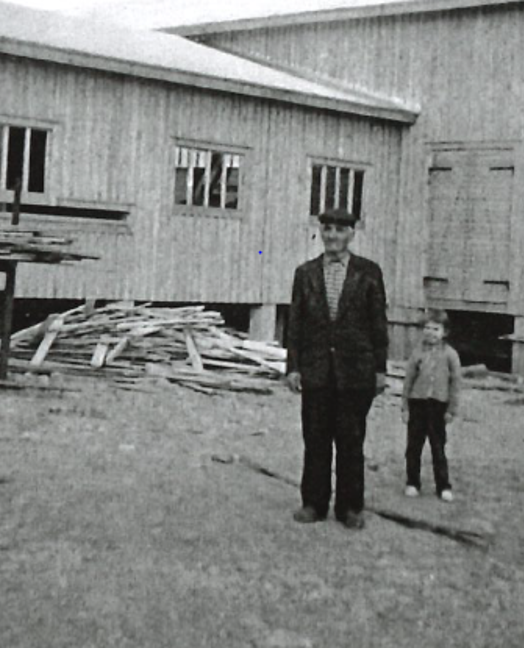1940s
Establishment of the sawmill

The story of Isojoen Saha began over a hundred years ago when Anselmi Hakamäki sailed across the Atlantic to learn about forestry and timber trade. In 1949, he bought a one-hectare plot of land that was located near the center of Isojoki and started to build a sawmill together with his family.
1950s
A time of growth

The Korean War that lasted from 1950 to 1953 and its effects on economy boosted the global demand of sawn timber. This inspired Isojoen Saha to increase its production, and the company started exporting sawn timber through nearby ports.
In the mid 1950s, the sawmill’s Raleigh frame was sold and replaced with two used AK-9 frames. This made it possible to handle twice as much wood, and new employees were needed.
1960s
The sawmill area was expanded
In 1963, Isojoen Saha bought new AURA frames from Kone ja Terä. Multiple production lines were used for sawing, and the sawmill needed an expansion. The sawmill area had now grown about five hectares big, and the company needed the entire area to be utilized.
In the mid 1960s, smaller sawmills’ time started to run out as technology developed and production became more efficient. However, Isojoen Saha was able to expand when the municipality planned about four hectares large industrial plot next to the sawmill. The renewed sawmill was used until 1969.
August 13, 1969 was a day of great misfortune for Isojoen Saha. A massive fire spread quickly in the sawmill and destroyed almost everything. Ten fire departments and hundreds of men came to extinguish the fire.
1970s
A new beginning

The Hakamäki family was not discouraged by the fire. After only a couple of months, the construction of a new sawmill began. The sawmill workers took part in the construction work, and the new foundation and the frame of the sawmill were built.
Isojoen Saha bought new production machinery, including the Otso-700 frame saws and two edgers from a domestic machine shop Karhula, as well as a chipper from Sweden. With the new machines, the sawmill’s production capacity was once again multiplied.
New technology tripled the production capacity

Next, a new sorting station was built. It increased the sorting capacity to more than 2 000 logs per day.
One major project focused on increasing efficiency was the artificial drying of sawn timber. In 1973, the construction of the first kiln began. Now deliveries could be made all year round and the sawmill did not have to be closed while waiting for dry product deliveries.
Thanks to new technological solutions, sawing became more efficient and production capacity quickly doubled, or even tripled. A significantly bigger part of sawn timber products was exported than sold to domestic markets. Through the company’s own export company and agencies, sawn timber was shipped to England and Central European countries.
1980s
Isojoen Saha was sold to Metsäliiton Teollisuus
Metsäliiton Teollisuus was interested in sawmills’ by-products and wood purchases, which made Isojoen Saha a potential target of acquisition. At the time, the sawmill was one of the largest in Southern Ostrobothnia, and it had its own wood procurement and the latest sawmill technology. This led Metsäliitto to buy all shares of Isojoen Saha in 1976.
The story of Isojoen Saha continued in Metsäliitto’s ownership for 13 years until the spring of 1989, when a fire destroyed everything once again. The sawmill that had been in use for 20 years burned down completely.
1990s
The sawmill returned to the ownership of the Hakamäki family

After the fire, Metsäliitto decided to quit sawing in Isojoki, and the sawmill was demolished.
After various stages, the sawmill’s ownership returned to the founding family when Johannes Hakamäki bought the familiar sawmill area in 1990. In 1991, the business was restarted. The new sawmill’s construction started right away. The construction was finished in 1993, and the sawmill is still in use today as a part of Isojoen Saha’s current production.
2000s
Isojoen Saha became a modern and successful export company

Today, Isojoen Saha Ltd employs more than 100 people, including contractors’ employees. Its sawn timber is utilized annually in almost 30 countries on three different continents.
Wood is still purchased from the same area as in the 1950s – Isojoki and its surrounding municipalities. The use of small logs is also a significant part of the sawmill’s current production. Technological advances have radically increased production efficiency: what was sawn in a year 70 years ago, is now sawn in three days.

What was sawn in a year 70 years ago, is now sawn in three days.




